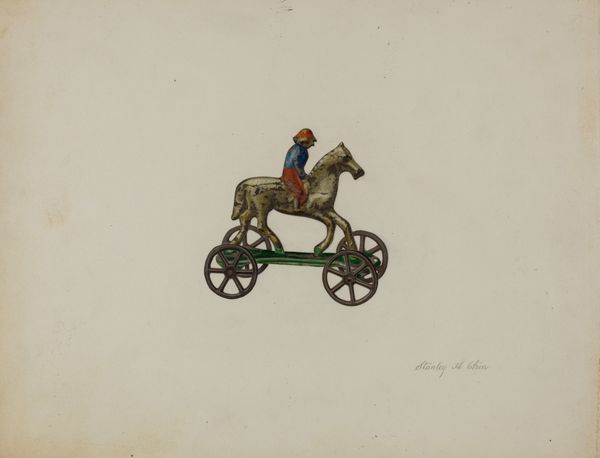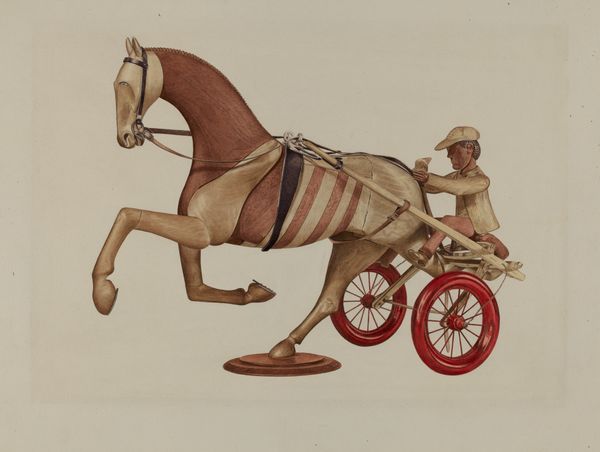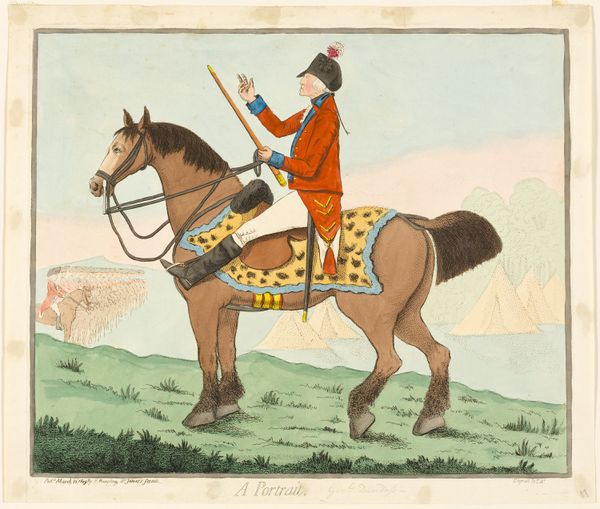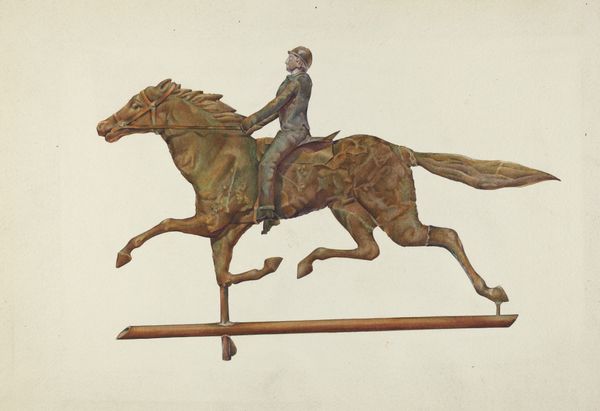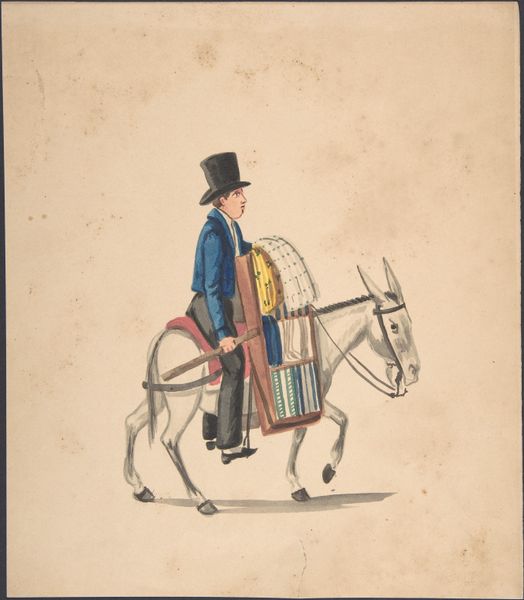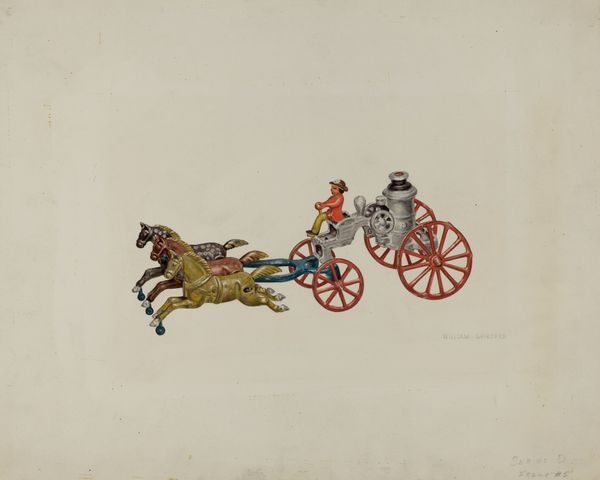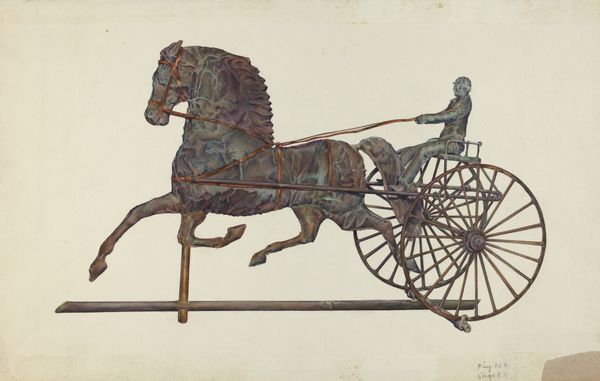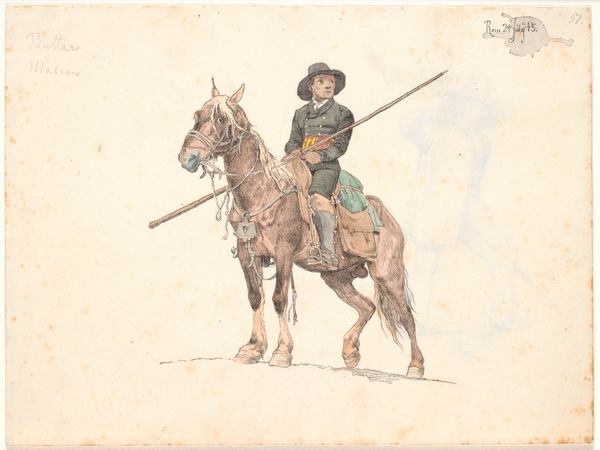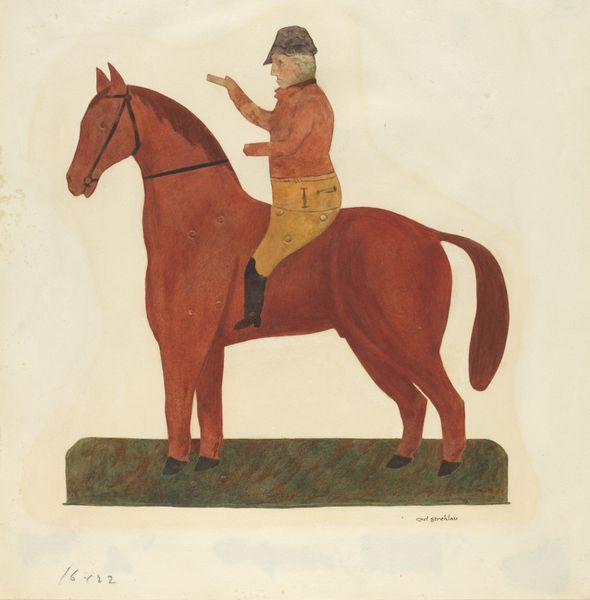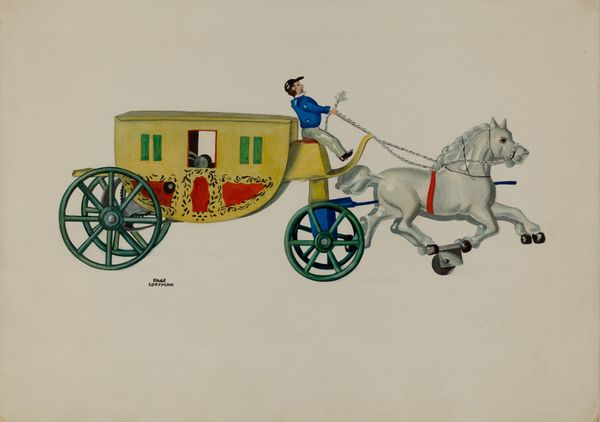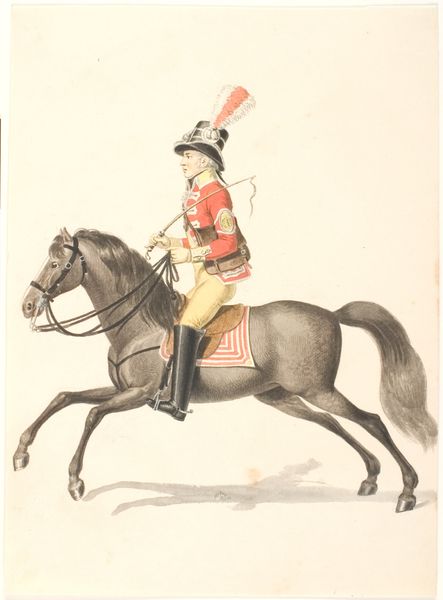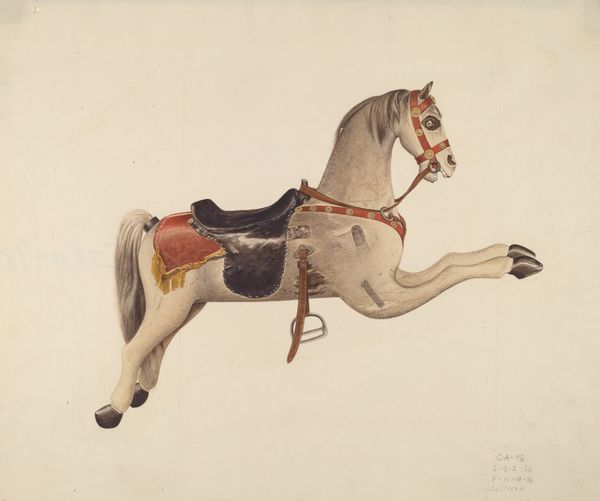
drawing, watercolor
#
portrait
#
drawing
#
caricature
#
caricature
#
watercolor
#
muted green
#
surrealism
#
animal drawing portrait
#
watercolour illustration
#
surrealism
Dimensions: overall: 23.7 x 30.5 cm (9 5/16 x 12 in.) Original IAD Object: 7 3/4" high; 9" long
Copyright: National Gallery of Art: CC0 1.0
Curator: This is Philip Johnson’s watercolor drawing, "Horse and Rider," dating from about 1935 to 1942. What strikes you about it initially? Editor: It has this wonderfully unsettling, dreamlike quality, almost like a caricature pulled from a half-remembered carnival ride. There’s something so off-kilter, so playfully sinister about the image, you know? Curator: I can see that. The choice of a toy horse certainly evokes a sense of childhood, but it's also heavily stylized. Consider the color palette: these muted greens and browns aren’t quite realistic. Is there an evocation, perhaps, of memory playing tricks on us? Editor: Exactly! The way the horse and rider are perched precariously on that wheeled platform amplifies the off-kilter vibe. It looks unstable. I see the wheels, but in my imagination, they begin spinning without really taking this awkward beast and its stiff-necked passenger anywhere. Curator: Note how Johnson, known more as an architect, here experiments with the conventions of portraiture. The horse, decked with unusual decorative elements, and the rider in a peculiar pose—aren't presented traditionally. How does that distort our cultural understanding of rider and horse as a classic image? Editor: Absolutely. Instead of glory or heroism, we get…irony. There’s this weird theatricality to the whole setup, a bit like looking at a stage set after everyone has left, and the props are still there, holding the echoes of a performance we can’t quite recall. Perhaps there's something Freudian about that—revealing that what we are familiar with has a disturbing undercurrent. Curator: Indeed. Johnson plays with our expectations, unsettling the familiar. The surrealist aesthetic turns this potentially straightforward subject into something far more psychologically charged. It reminds me of forgotten toys and repressed memories resurfacing unexpectedly. Editor: Yes! And I love how it prompts you to question what you are seeing – not just a horse and rider, but this odd blend of memory, desire, and slightly creepy whimsy. This is much more interesting than any idealized horse and rider painting, wouldn't you agree? Curator: I concur. Johnson’s "Horse and Rider" offers a potent reminder of how imagery, when disrupted, can reveal unexpected facets of our cultural psyche. It certainly complicates the stories we tell ourselves about beauty, strength, and nostalgia. Editor: For me, it’s just lovely to see a toy get another life this way.
Comments
No comments
Be the first to comment and join the conversation on the ultimate creative platform.
